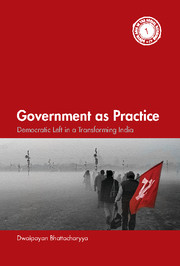Book contents
Appendix II - Local Governance and Electability
Published online by Cambridge University Press: 05 March 2016
Summary
The panchayat election in 2008 was a watershed election in West Bengal. That year the left met its first serious challenge in the countryside after 30 years of uninterrupted domination. In the preceding panchayat election (2003), the Left Front had won in 85 per cent Panchayat Samiti seats, which came down to 57.45 per cent in 2008. In 2003, of the total 3,220 Gram Panchayat the Left Front had won 2,311 or 71.77 per cent; in 2008 the number was 1,625, or 50.47 per cent (Chattopadhyay, 2008). As the 2008 panchayat election launched an unmistakable power-shift in West Bengal's rural politics, a trend that continued even in 2013 and beyond, one was obviously curious about what actually made people vote so differently in it in comparison to the previous local elections. The media in general attributed the left's land acquisition policy as primarily responsible for its setback. We wanted to find out, more specifically, if there was any correlation between the electorate's perception of the quality of local governance and their voting preference. For this we placed a set of governance-related data drawn from a large sample of Gram Panchayats in 2005-06 against the outcome of the 2008 panchayat election in the same localities. The exercise gave us some results which may have interesting implications.
The pre-2008 data were collected in the course of a baseline survey conducted by a team of researchers on the impact of the state government's policy of ‘Strengthening Rural Decentralization’ (SRD), a policy initiated with the financial assistance of the British Department for International Development (DFID). The study had a wide coverage: it included all 18 districts of rural West Bengal with a sample size of 162 Gram Panchayats (or 5 per cent of the total number of Gram Panchayats excluding the Darjeeling Gorkha Hill Council) and was based arguably on one of the country's largest surveys of households (37,000 plus) for evaluating the performance of Gram Panchayats in any state. For sample selection, a two-stage sampling method was employed. In the first stage, all blocks were grouped into four quartiles according to their degree of ‘backwardness’ based on three principal indicators drawn from the Census of 2001: percentage level of illiteracy, percentage of SC/ST population in total population, and percentage of agricultural labourer in total population.
- Type
- Chapter
- Information
- Government as PracticeDemocratic Left in a Transforming India, pp. 232 - 240Publisher: Cambridge University PressPrint publication year: 2016



